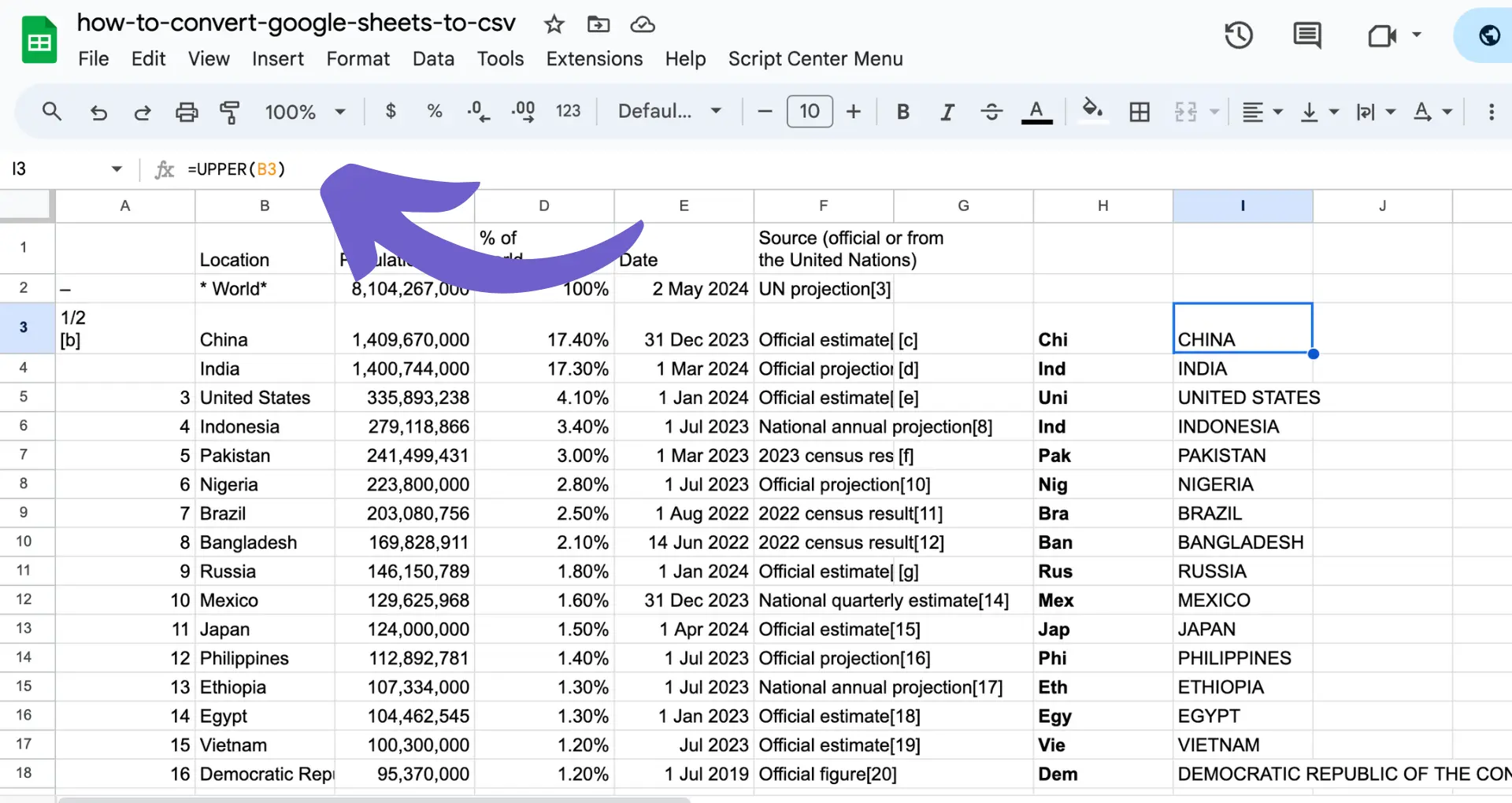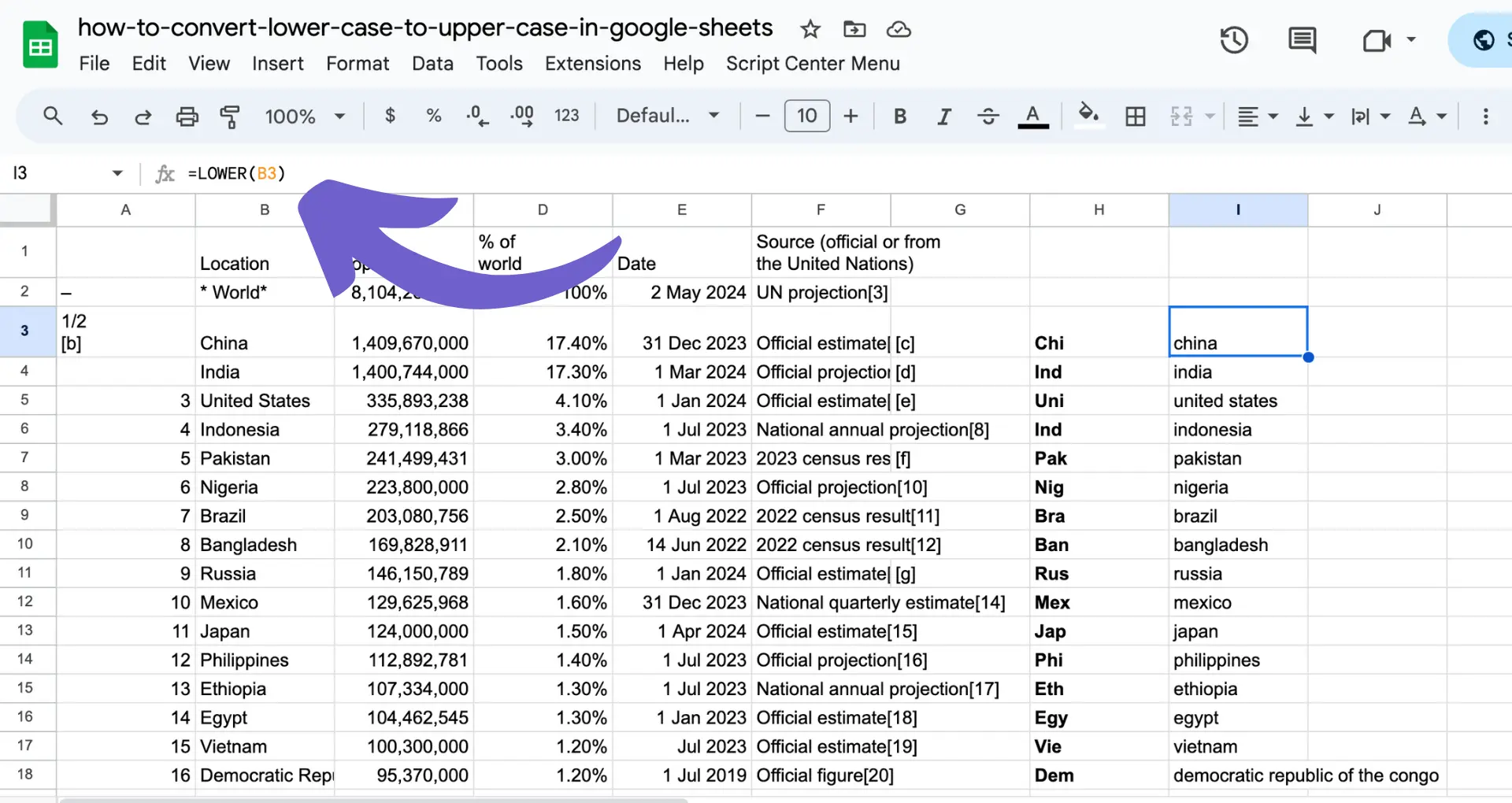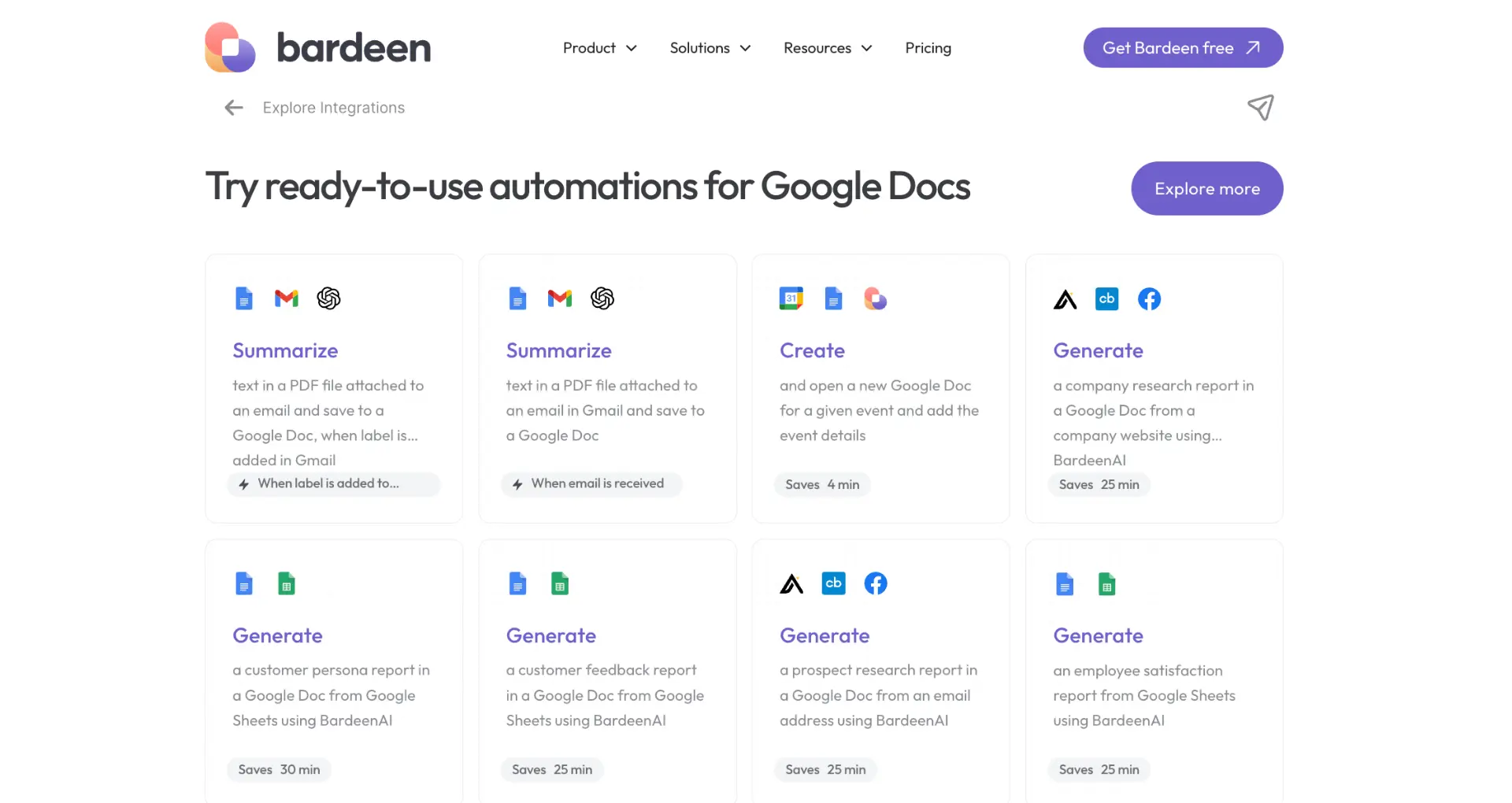Use the UPPER function to convert text to uppercase in Google Sheets.
By the way, we're Bardeen, we build a free AI Agent for doing repetitive tasks.
If you're working with text in Sheets, you might love Bardeen's GPT in Spreadsheets feature. It reduces copy-pasting from ChatGPT, making text management a breeze.
Converting text from lower case to upper case is a common task when working with data in spreadsheets. Google Sheets offers a simple and efficient way to transform the case of your text using built-in functions. In this step-by-step guide, we'll show you how to convert lower case text to upper case in Google Sheets, helping you maintain consistency and improve the readability of your data.
Introduction to Text Transformation in Google Sheets
Text case plays a crucial role in data management and presentation. Inconsistent case formatting can make your data appear unprofessional and difficult to read. Fortunately, Google Sheets provides powerful built-in functions to easily transform text case, allowing you to maintain a consistent and polished look throughout your spreadsheets.
With Google Sheets, you can quickly convert text from lowercase to uppercase, capitalize each word, or apply sentence case. These text transformation capabilities bring AI into your spreadsheet and ensure your data is presented in a clear and standardized format.
Bardeen can help you extract insights from various data sources and save them directly to Google Sheets, centralizing key information for analysis. Try these playbooks to automatically pull out important information and save it to your spreadsheet:
Whether you're preparing reports, analyzing data, or collaborating with others, mastering text case conversion in Google Sheets is an essential skill for effective data management.
Using the UPPER Function to Convert Text
The UPPER function in Google Sheets allows you to easily convert text to uppercase. The syntax for the function is simple: =UPPER(text), where "text" is the cell reference or string you want to convert.
To convert a single cell to uppercase, follow these steps:
- Select the cell where you want the uppercase text to appear.
- Type
=UPPER(in the cell. - Click on the cell containing the text you want to convert or type the cell reference (e.g., A1).
- Close the parentheses and press Enter.
Bardeen can save you time by automating tasks that involve moving data into Google Sheets. Instead of manually copying and pasting text, use these playbooks to extract text from various sources and add it directly to your spreadsheet:

To convert multiple cells to uppercase:
- Select the range of cells where you want the uppercase text to appear.
- In the first cell of the range, type
=UPPER(. - Click on the first cell containing the text you want to convert or type the cell reference.
- Close the parentheses and press Enter.
- Drag the formula down to apply it to the entire range.
The UPPER function will instantly convert the specified text to uppercase, making it easy to maintain consistent formatting in your spreadsheets. If you want to integrate Google Sheets with other tools, Bardeen can help.
You can save even more time when you automate enrichment in Google Sheets. Use Bardeen to connect with LinkedIn and update profiles automatically.
Automating Conversion with ArrayFormula
To handle multiple cells at once, you can use the ArrayFormula function in Google Sheets. The syntax for ArrayFormula with the UPPER function is: =ArrayFormula(UPPER(range)).
Here's how to apply the UPPER function across a column or a selected range using ArrayFormula:
- Select the cell where you want the converted text to start.
- Type
=ArrayFormula(UPPER(in the cell. - Select the range of cells containing the text you want to convert (e.g., A2:A100).
- Close the parentheses and press Enter.
ArrayFormula will automatically apply the UPPER function to each cell in the specified range, converting all the text to uppercase.
This approach is particularly useful when working with large datasets or when you need to convert text in an entire column. By using ArrayFormula, you can avoid manually copying the formula to each cell, saving time and effort. For more advanced tasks, consider using Excel integrations to streamline your workflow.
Bardeen can take automating tasks in Google Sheets even further by enabling you to import, export, and enrich data with just a few clicks. Try these playbooks to save time:
Keep in mind that ArrayFormula is not necessary if you're using functions that already return an array of values, such as FILTER, SEQUENCE, or QUERY.
Practical Applications of Uppercase Conversion
Converting text to uppercase has several real-world applications that can benefit data management and presentation:
- Preparing data for reports: Ensuring consistency in data formatting, such as converting all headers or specific columns to uppercase, can enhance the readability and professional appearance of reports.
- Standardizing database entries: Converting certain fields, like product codes or user IDs, to uppercase helps maintain uniformity and simplifies data lookup and comparison.
Bardeen can automate converting key fields to uppercase as you import data from various sources into your database or spreadsheet. This ensures standardized formatting for easier data management and analysis. Try these playbooks:
Here are some examples of data standardization using the UPPER function:
- Converting customer names to uppercase before importing them into a CRM system, ensuring consistent formatting for easier searching and sorting.
- Transforming product SKUs to uppercase to match the format used in inventory management software, facilitating seamless data integration.
By applying the UPPER function to specific data points, you can create a standardized format that improves data integrity and streamlines various business processes. Learn more about building a robust prospect list to improve your data management efforts.
Save time on repetitive tasks by using Bardeen's automation workflows. Focus on important work and automate the rest.
Tips for Efficient Data Management
To ensure your data is clean and consistent before applying case transformations, consider combining the UPPER function with other Google Sheets functions:
- TRIM: Removes extra spaces from the beginning and end of a text string, helping standardize data before converting case.
- CLEAN: Removes non-printable characters from a text string, which can cause issues when transforming case or integrating with other systems.
Here's an example of how to use these functions together:
=UPPER(TRIM(CLEAN(A1)))
This formula cleans the data in cell A1, removes any extra spaces, and then converts the result to uppercase.
Bardeen can automate this process of cleaning and transforming data in Google Sheets. Try these playbooks to standardize and clean your data with just a click:
Remember, data integrity is crucial before applying any case transformations. Ensure your data is accurate, complete, and consistent to avoid propagating errors or inconsistencies when changing case.
Once your data is cleaned and standardized, Bardeen can help you sync it to other tools for further analysis or integration. Use these playbooks to copy data from Google Sheets to your CRM or project management system:
By combining the UPPER function with TRIM and CLEAN, you can create a more robust data cleaning process that results in standardized, reliable data for further analysis or integration with other tools.
Exploring Additional Case Functions: LOWER and PROPER
In addition to the UPPER function, Google Sheets offers two other case-related functions: LOWER and PROPER.
- LOWER: Converts all characters in a specified string to lowercase. Syntax:
=LOWER(text)

- PROPER: Capitalizes the first letter of each word in a specified string, while converting all other characters to lowercase. Syntax:
=PROPER(text)
These functions can be integrated into workflows that involve uppercase conversions. For example, you might use UPPER to standardize product codes, while using PROPER to format customer names. For more advanced automation, consider using AI sales automation tools.
Here's an example of using LOWER and PROPER together:
=PROPER(CONCAT(LOWER(A1)," ",LOWER(B1)))
This formula assumes you have a first name in cell A1 and a last name in cell B1. It converts both to lowercase, concatenates them with a space, and then applies the PROPER function to capitalize the first letter of each word.
Keep in mind that PROPER may not always produce the desired result for certain names or abbreviations (e.g., "McLeod" becomes "Mcleod"). In such cases, you may need to make manual adjustments or use other functions like SUBSTITUTE with Google Docs to handle specific formatting requirements.
Save time on repetitive tasks and focus on what matters by using integrate Google Docs with Bardeen.

Automate Your Google Sheets with Bardeen Enhancements
While manually converting text from lower case to upper case in Google Sheets is straightforward using the UPPER function, automating this process can significantly enhance your productivity, especially when dealing with large datasets. Automation tools like Bardeen offer powerful integrations with Google Sheets to streamline repetitive tasks, ensuring data consistency and saving valuable time.
Here are some examples of automations that can be leveraged within Google Sheets using Bardeen:
- Copy a newly created Asana task to Google Sheets: This automation ensures that every new task created in Asana is automatically added to your Google Sheets, keeping your project tracking up-to-date.
- Copy all Github issues to Google Sheets: Automatically transfer all your GitHub issues into a Google Sheet, organizing bug and feature requests to streamline your workflow.
- Copy records from SmartSuite to Google Sheets: Seamlessly transfer records from SmartSuite into Google Sheets, making data management more efficient for reporting, analysis, and team collaboration.
Embrace automation with Bardeen to enhance your Google Sheets experience and focus on what truly matters. Start by downloading the Bardeen app.






.svg)
.svg)
.svg)
